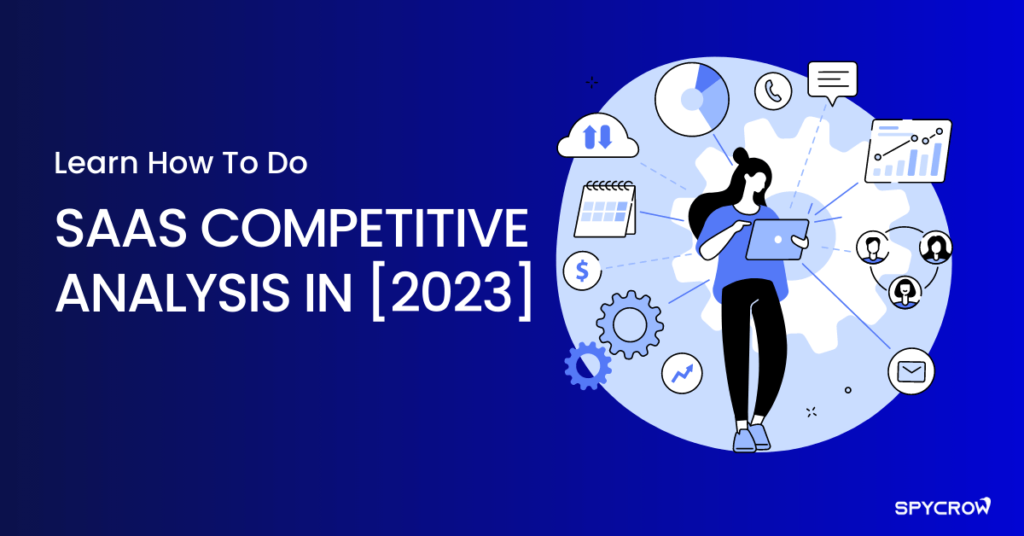What is a competitor analysis for SaaS companies?
Knowing our competitors’ strengths and weaknesses is crucial to thriving in the competitive SaaS industry. Analyzing them can provide insights into their strategies, products, and services, improving our own offerings. Failing to do so may cause missed opportunities to differentiate, optimize pricing, target new customers, and identify potential threats.
In this guide, we’ll use an imaginary email marketing SaaS called MailBeast for small and mid-size businesses.
Who are our competitors?
The first step in conducting a competitor analysis is to identify our competitors. We can do this by exploring keywords defining our business and finding the most prominent companies. In the case of MailBeast, that would be something like “email marketing platforms”. Here are the results:

Google is ranking articles that are listing email marketing software instead of directly ranking our competitor since it considers it more relevant because the user is searching for a comparison. Some companies will be listed in most of the results indicating that these are our primary competitors.
This method is free but lacks statistics and quantitative information. Competitor intelligence tools can provide these valuable insights but are expensive.
At Spycrow, we understand how challenging it can be to navigate the world of data and statistics. That’s why we offer a free list of competitors for every user, whether free or paid.
To take advantage of this offer, create a free account and click “Request a competitor list” after signing up.
Based on our research, the most significant competitors of MailBeast are:
- Mailchimp.com
- Sendinblue.com
- Sendgrid.com
- Mailjet.com
Now that we know our competitors, it’s time to start the research and analysis.
Where are our competitors getting traffic from?
Understanding our competitors’ traffic sources is crucial in competitor analysis. This can be achieved by analyzing their website traffic sources, such as search engines, social media, and referrals. We can use this information to develop a targeted marketing strategy to attract similar traffic sources.
The best way to obtain this information is through competitor analysis tools. Fortunately, Spycrow offers a free plan that provides all the necessary data. Let’s create an account for MailBeast and review the data.
First, we’ll look at Direct traffic, which mainly consists of returning visitors, including users of SaaS products.
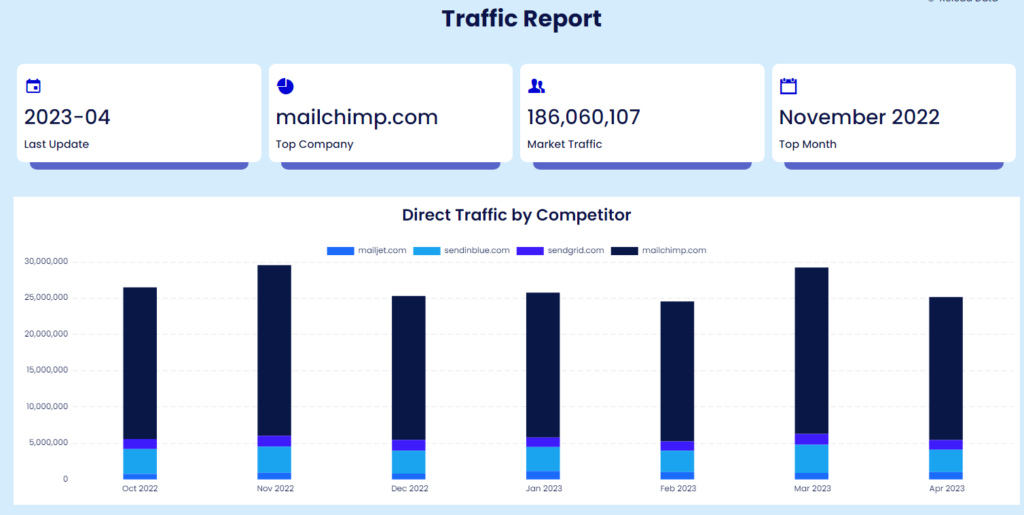
Based on the data, Mailchimp is the clear market leader, followed by Sendinblue and Sendgrid. Now, let’s review the data for the other channels.


Here are some insights that we can get from the data above:
- Mailchimp is dominating Search and Paid traffic, which means we should conduct an in-depth analysis of their SEO and PPC strategy
- Sendinblue is leading in Social and is a strong contender for the top spot in Referral. It’s interesting to note that despite Mailchimp’s size, Sendinblue is highly competitive in these categories. We should closely analyze their partnerships and social media presence.
After analyzing the Traffic report, we now have a clear understanding of:
- Our two main competitors
- The distribution of traffic between them and the areas where they excel
This knowledge will enable us to closely monitor their strengths and weaknesses and develop effective competitive strategies.
SEO Competitor Analysis
We will conduct an SEO competitor analysis to understand how our competitors attract organic traffic.
To begin, let’s review the past six months.
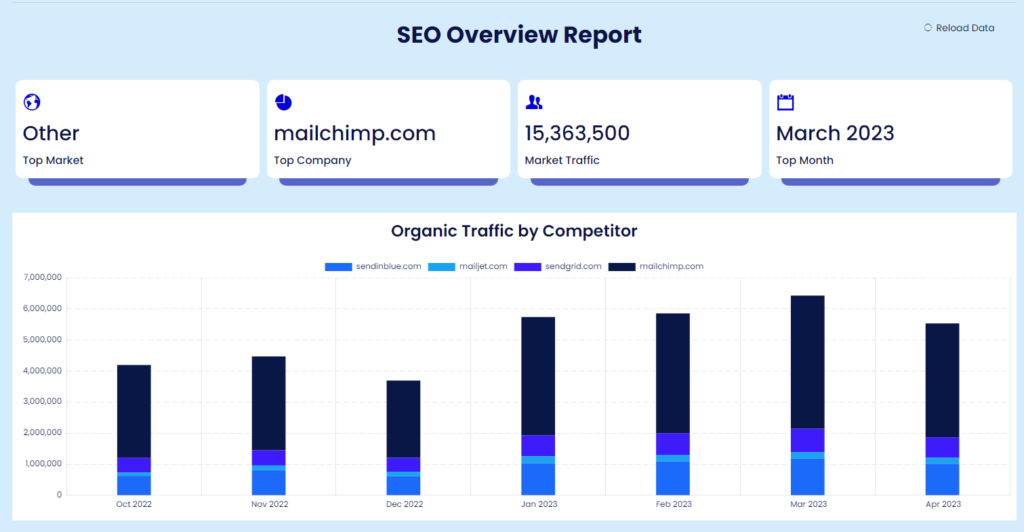
The market leaders are Mailchimp, followed by Sendinblue and Sendgrid.
Traffic distribution between countries
Now let’s look closer at Mailchimp and examine their traffic distribution across countries.

The primary market for Mailchimp is the United States. However, the majority of the traffic is distributed between other small markets. That’s expected, considering they are the most popular email marketing software worldwide.
Keywords analysis
Next, let’s examine the keywords that are driving traffic to Mailchimp’s website. Big brands in any business niche drive tons of traffic from brand keywords.

Mailchimp is no exception, as over 30% of its traffic comes from brand keywords.
However, we can see other interesting keywords like “etsy”.
Why and how would an email marketing software drive so much traffic from a brand keyword of an eCommerce company? To answer this question, we need to analyze the landing page report.
Landing page analysis

The landing page revealed that the second most visited landing page of Mailchimp is an article answering a question that probably many people considering selling on Etsy are asking – “How Much Does it Cost to Sell on Etsy?”.
This article provides an opportunity for Mailchimp to monetize the traffic by offering an alternative to Etsy’s fees and selling products from a website made by the user using Mailchimp’s website builder.
This isn’t as relevant to our business MailBeast because we don’t offer a website builder. However, it shows the genius strategy of Mailchimp to utilize the high search volume of another brand and convert part of them into their clients. Imagine how many powerful ideas and insights we will find if we analyze the rest of their keywords. How about doing the same for the other competitors?
This example highlights the importance of competitor analysis in defining our SEO strategy.
PPC Competitor Analysis
The world of PPC is all about maximizing return on investment. While organic traffic is great for driving traffic to our website, paid traffic is where the money is. This is because paid search campaigns focus on bottom-funnel keywords with high buying intent, making it easier to achieve a positive ROI.
With this in mind, let’s take a closer look at the paid traffic overview of MailBeast’s competitors.
Paid traffic overview
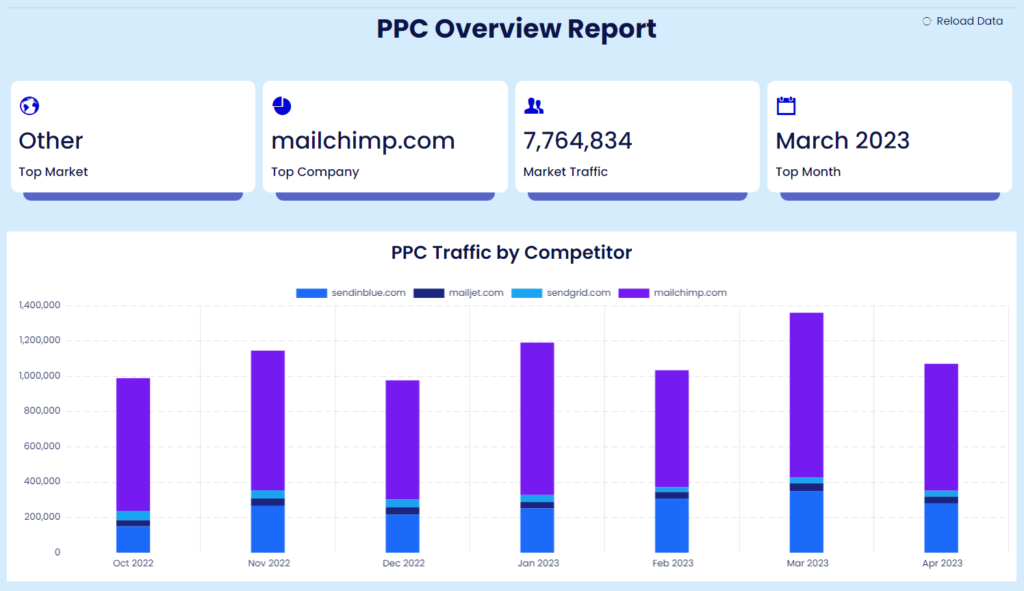
Mailchimp is currently the leader in paid traffic, but Sendinblue is also increasing its PPC traffic by taking advantage of this year’s uptrend. Thus, we will take a closer look at Sendinblue this time.
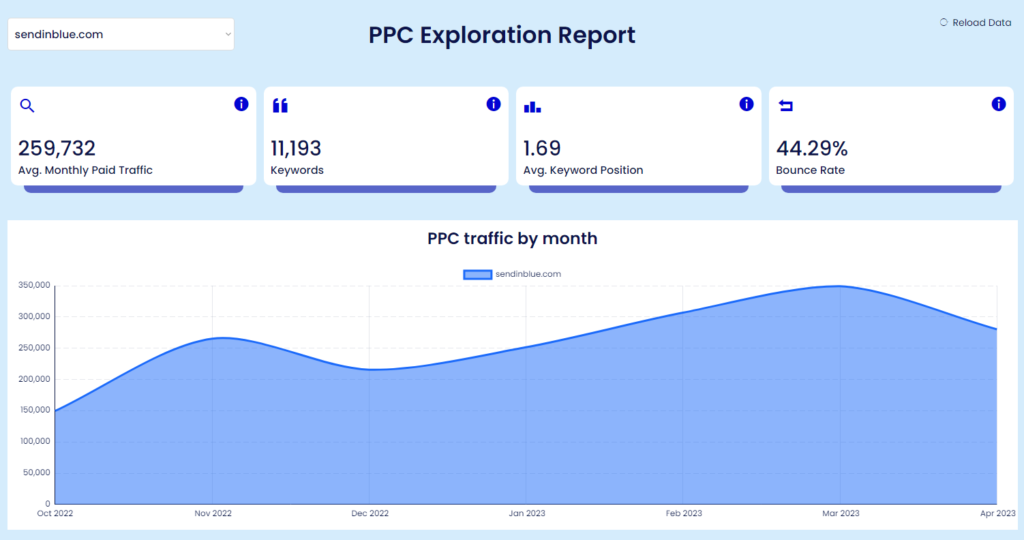
Sendinblue had a great start to the year as they were able to increase their PPC traffic by over 50% in March compared to December 2022. Our next step would be to analyze where this increased traffic comes from.
Keyword analysis
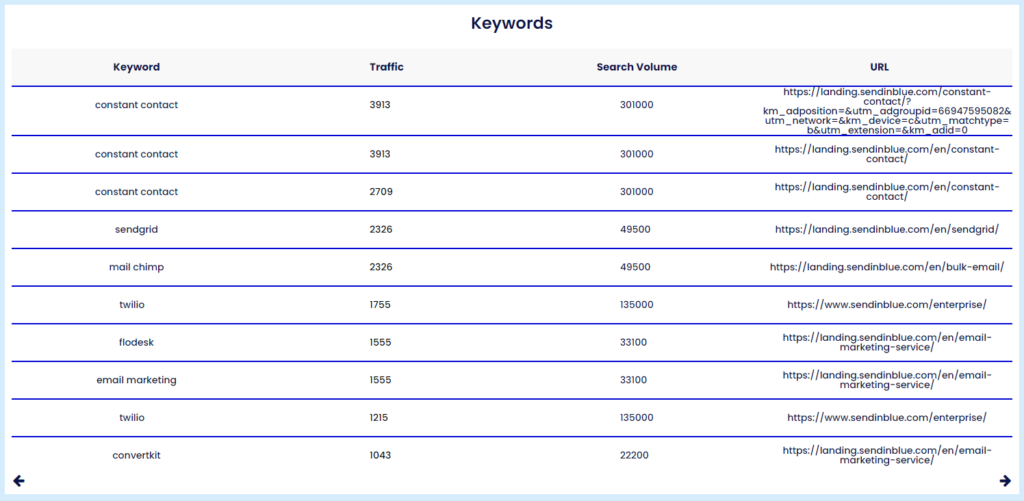
Sendinblue targets their competitors’ brand keywords such as ‘Constant Contact,’ ‘SendGrid,’ and ‘Mailchimp.’ They have dedicated landing pages for each competitor, which suggests that they have invested time to ensure maximum chances of conversion for the traffic they receive. In addition, they are receiving some of their PPC traffic from keywords such as ’email marketing,’ which also has a dedicated landing page.
It’s crucial to pay attention to the landing pages that our competitors are using and make the most of that information.
Ads analysis
In the final step of the PPC analysis, we need to examine the ads that our competitors are using to attract traffic.
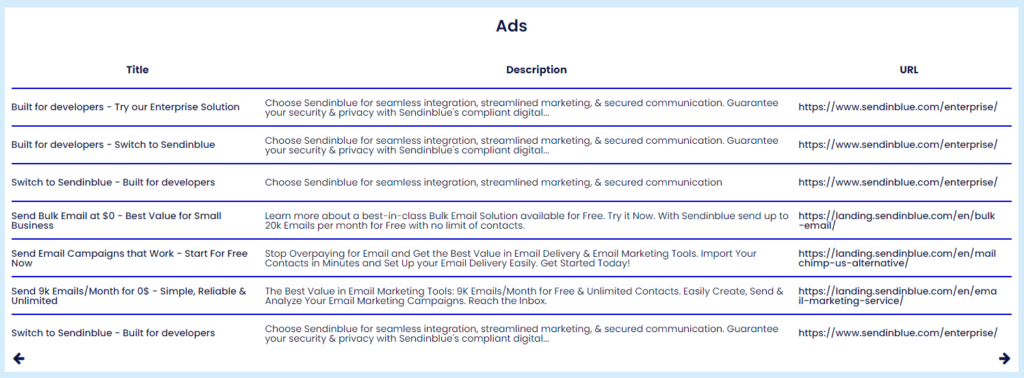
We can use the PPC landing page report to search for the best-performing landing pages and then examine the ads that are driving traffic to them. By doing this, we can gain valuable insights into what works for our competitors and use this information to improve our PPC strategy and achieve even better results.
Backlink Competitor Analysis
The backlink analysis is integral to competitor analysis, providing valuable insights into our competitors’ referral traffic, partnerships, affiliates, and backlink strategy. Although time-consuming and tedious, going through irrelevant links is necessary to find relevant information.
Let’s take a look at Mailjet.com, another competitor of MailBeast.

Most of the backlinks we found pointed to the widget, indicating that these websites are most likely Mailjet clients. This information can help us develop a more accurate buyer persona for MailBeast’s ideal customer and identify potential customers to approach if we believe our product can offer more value than our competitors.
Aside from the backlinks pointing to Mailjet’s widget, we noticed a standout backlink: https://webnus.net/best-email-marketing-services/.
This backlink is part of a new ranking of the best email marketing services in 2023. As a new player in the market, we want MailBeast to be included in such articles. However, adding our company to a high-traffic list like this can be expensive. By monitoring backlinks and identifying relevant content before they rank on search engines, we can reach out to the company or media and make mutually beneficial arrangements.
Conclusion
The competitor analysis we conducted for our hypothetical SaaS company provided us with a comprehensive understanding of the following aspects of our competitors:
- Their share of voice in the market
- The channels they use for marketing
- Their SEO strategies, including keywords, landing pages, etc.
- Their PPC strategies, such as keywords, landing pages, and ads
- Their referral and backlink strategies
This information gives us a clear idea of what to include in our digital marketing strategy to compete effectively in the SaaS market.
To save time and money, you can utilize Spycrow to generate the same reports that were presented in this guide within minutes. By creating a free account and adding your competitors or requesting a list of competitors, you can get access to comprehensive reports on your competitors’ digital marketing strategies.This will help you make informed decisions and develop a competitive marketing strategy for your business.

